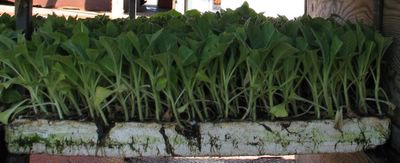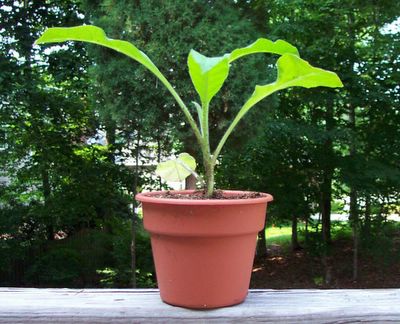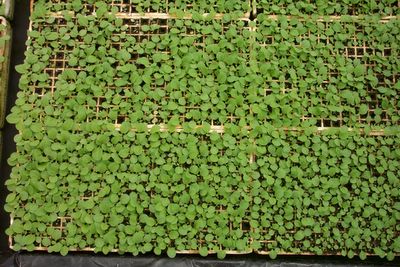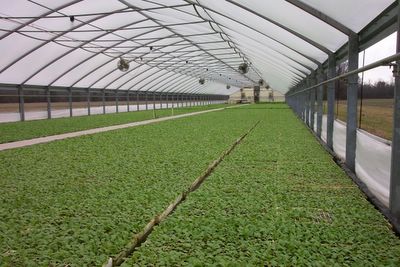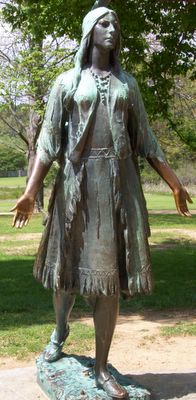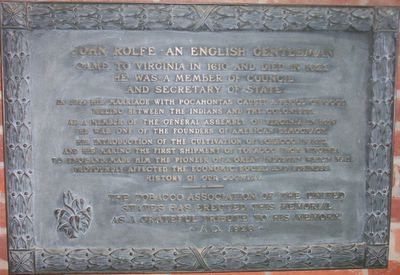Tuesday, August 21, 2007
Friday, April 29, 2005
Friday, April 08, 2005
A Big Debt Is Owed to Pocahontas
There is no doubt that John Rolfe's commerce in tobacco saved the Jamestown colony. But a very major supporting role in Rolfe's success was the contribution of Pocahontas, the daughter of Powhatan, a powerful and unscrupulous Indian chief.
In ritualistic ceremonies, captives of Powhatan were dismembered piece by piece while they lived. Sometimes, a captive was tied hand and foot and his head laid on a block of stone. A stone mallet was used to beat his head to pulp. The captive's scalp was then hung on a line stretched between trees for the tribe to admire. Unfortunately, the English colonists were not aware of Powhatan or this Indian tradition before they arrived. However, the colonists were fortunate that Pocahontas did not share her father's hostile traits.
Pocahontas was about ten years old when the colonist arrived in 1607. Seeing the colonists struggle for food and protection, she responded with a child's curiosity and concern. She made regular visits to Jamestown and was treated with respect by the also curious colonists. One of the colonists seemed to connect better than the rest with the sign language communication with Pocahontas. That person was John Smith, a twenty-six year old former of soldier of fortune in foreign lands before coming to Jamestown. John Smith and Pocahontas began to learn each other's language, and this communication enabled Pocahontas to persuade a few of her friendly brethren to supply corn, fish and wild game to the colonists.
Besides bringing food to the colonists and directing John Smith to the more friendly Indians, Pocahontas rescued John Smith from a ritualistic execution by her father. In December, 1607, John Smith decided to venture far from Jamestown in search of food and another water passage beyond the Chesapeake Bay. Smith ran into unfriendly Indians and had to shoot one with his pistol before he was captured. Taken to Chief Powhatan, the chief ordered his execution as the evening's entertainment. As the Indians were about to club Smith, young Pocahontas stepped from the crowd. She took Smith's head into her arms and laid her own head upon Smith's to save him from death. Powhatan became a changed person after this event and attempted to make peace with the colonists.
However, in 1609 the Indians massacred sixty colonists, and Pocahontas moved further away from Jamestown because of the strife. In 1613, the colonist leaders decided to abduct Pocahontas and take her to Jamestown as a hostage. The plan was to use Pocahontas to negotiate with Powhatan to make a lasting peace with the colonists.
Pocahontas was a willing captive, and at an age of fifteen or sixteen, was a beautiful princess. However, knowing that Pocahontas was safe and well cared for, Chief Powhatan was in no hurry to negotiate. Pocahontas was placed in the care of a Church of England minister and began her conversion to Christianity. While studying for her conversion, Pocahontas met the handsome, well-educated twenty-eight year old Englishman named John Rolfe. They were married on April, 1614 in a little wildflower decorated church in Jamestown. Present at the ceremony was Pocahontas' uncle and two brothers. Chief Powhatan refused to attend the ceremony, but sent a chain of pearls as a wedding present.
In 1616, the Virginia Company, the investment bankers for Jamestown, decided to send John Rolfe, Pocahontas and their one year old son to England. By bringing to England the Indian princess who had become an English lady, the Virginia Company hoped to attract more money and colonists to Virginia.
The seven-month visit to England by Rolfe's family was a success for the Virginia Company, but a tragedy for Pocahontas. She died of pneumonia on March 21, 1617 as she, John and son, Thomas, were preparing to return to Jamestown. John later returned to Jamestown after leaving Thomas in the care of Rolfe's brother in London.
John Rolfe found consolation for his sorrow in developing the tobacco industry, but he was killed in 1622 by an Indian uprising. His son, Thomas Rolfe, didn't come to Virginia until 1635. His Indian ancestors accepted him as part of their royal line and gave him thousands of acres of land in the provinces originally inherited by his grandfather, Chief Powhatan.
It is an unfortunate fact that the stories, plays, and movies about Pocahontas have had the effect of making her seem more of a children's storybook character than one of major historical importance. John Rolfe would never have the opportunity to grow tobacco in Jamestown if Pocahontas had not shown her devotion to the English colonists. Without her compassionate gifts of food and protection with friendly Indians, the Jamestown colony would have suffered the same fate as the "lost colony" on Roanoke Island, North Carolina.
In today's world, we would say that Pocahontas accepted the diversity of cultural and religious differences, something her father was unable to do. This is a history lesson pertinent in today's world of unrest because of our worldwide conflict over cultural and religious differences.
In ritualistic ceremonies, captives of Powhatan were dismembered piece by piece while they lived. Sometimes, a captive was tied hand and foot and his head laid on a block of stone. A stone mallet was used to beat his head to pulp. The captive's scalp was then hung on a line stretched between trees for the tribe to admire. Unfortunately, the English colonists were not aware of Powhatan or this Indian tradition before they arrived. However, the colonists were fortunate that Pocahontas did not share her father's hostile traits.
Pocahontas was about ten years old when the colonist arrived in 1607. Seeing the colonists struggle for food and protection, she responded with a child's curiosity and concern. She made regular visits to Jamestown and was treated with respect by the also curious colonists. One of the colonists seemed to connect better than the rest with the sign language communication with Pocahontas. That person was John Smith, a twenty-six year old former of soldier of fortune in foreign lands before coming to Jamestown. John Smith and Pocahontas began to learn each other's language, and this communication enabled Pocahontas to persuade a few of her friendly brethren to supply corn, fish and wild game to the colonists.
Besides bringing food to the colonists and directing John Smith to the more friendly Indians, Pocahontas rescued John Smith from a ritualistic execution by her father. In December, 1607, John Smith decided to venture far from Jamestown in search of food and another water passage beyond the Chesapeake Bay. Smith ran into unfriendly Indians and had to shoot one with his pistol before he was captured. Taken to Chief Powhatan, the chief ordered his execution as the evening's entertainment. As the Indians were about to club Smith, young Pocahontas stepped from the crowd. She took Smith's head into her arms and laid her own head upon Smith's to save him from death. Powhatan became a changed person after this event and attempted to make peace with the colonists.
However, in 1609 the Indians massacred sixty colonists, and Pocahontas moved further away from Jamestown because of the strife. In 1613, the colonist leaders decided to abduct Pocahontas and take her to Jamestown as a hostage. The plan was to use Pocahontas to negotiate with Powhatan to make a lasting peace with the colonists.
Pocahontas was a willing captive, and at an age of fifteen or sixteen, was a beautiful princess. However, knowing that Pocahontas was safe and well cared for, Chief Powhatan was in no hurry to negotiate. Pocahontas was placed in the care of a Church of England minister and began her conversion to Christianity. While studying for her conversion, Pocahontas met the handsome, well-educated twenty-eight year old Englishman named John Rolfe. They were married on April, 1614 in a little wildflower decorated church in Jamestown. Present at the ceremony was Pocahontas' uncle and two brothers. Chief Powhatan refused to attend the ceremony, but sent a chain of pearls as a wedding present.
In 1616, the Virginia Company, the investment bankers for Jamestown, decided to send John Rolfe, Pocahontas and their one year old son to England. By bringing to England the Indian princess who had become an English lady, the Virginia Company hoped to attract more money and colonists to Virginia.
The seven-month visit to England by Rolfe's family was a success for the Virginia Company, but a tragedy for Pocahontas. She died of pneumonia on March 21, 1617 as she, John and son, Thomas, were preparing to return to Jamestown. John later returned to Jamestown after leaving Thomas in the care of Rolfe's brother in London.
John Rolfe found consolation for his sorrow in developing the tobacco industry, but he was killed in 1622 by an Indian uprising. His son, Thomas Rolfe, didn't come to Virginia until 1635. His Indian ancestors accepted him as part of their royal line and gave him thousands of acres of land in the provinces originally inherited by his grandfather, Chief Powhatan.
It is an unfortunate fact that the stories, plays, and movies about Pocahontas have had the effect of making her seem more of a children's storybook character than one of major historical importance. John Rolfe would never have the opportunity to grow tobacco in Jamestown if Pocahontas had not shown her devotion to the English colonists. Without her compassionate gifts of food and protection with friendly Indians, the Jamestown colony would have suffered the same fate as the "lost colony" on Roanoke Island, North Carolina.
In today's world, we would say that Pocahontas accepted the diversity of cultural and religious differences, something her father was unable to do. This is a history lesson pertinent in today's world of unrest because of our worldwide conflict over cultural and religious differences.
Tuesday, March 29, 2005
Monday, March 28, 2005
Background on John Rolfe, The Sod Father of Tobacco
America's commercial involvement with tobacco was the economic salvation of the struggling English colony at Jamestown. The person credited with this historic event was an Englishman and a Jamestown colonist, John Rolfe.
In May 1609, John Rolfe and his wife left England on the sailing ship, Sea Venture, bound for Jamestown. The Virginia Company, founded by investors, had financed and sponsored the English colony founded at Jamestown two years earlier. The Company expected the colonists to start industrial enterprises in Virginia that would return profits to the Company. Along the way, the Sea Venture ran aground on a reef off the Bermudas, but the entire crew of 150 safely reached shore in the ship's boats.
The colonists found Bermuda to be a hospitable place with sufficient food. In the following months, they built two smaller ships from cedar trees and salvage. By May 1610 the two ships, aptly named the Patience and the Deliverance, were ready. The ships reached Jamestown after ten days sailing. While on Bermuda, John Rolfe's wife had given birth to a daughter who was christened with the name Bermuda, but the child died there. Rolfe's wife also died, probably soon after they reached Jamestown.
The tobacco John Rolfe found growing near the Jamestown settlement was a strong leaf described by the colonists as "poore and weake, and of byting tast." In 1612, just two years after his arrival in Jamestown, Rolfe planted the first crop of a milder tobacco from seeds acquired from the Spanish colonies of Trinidad and Caracas. This marriage of the perfect soil with the perfect seed would later produce a bounty far more valuable than all the gold in America.
The first shipment from Rolfe's farm went to England in 1613. Although only a few hundred pounds, it was recognized by London merchants immediately for its possibilities. They demanded more. At the same time, the settlers saw that exporting tobacco was the only way to ensure the survival of their colony. The English had previously failed in four attempts to plant a permanent colony in the New World. Jamestown, the fifth attempt, was a success because of the commerce in tobacco.
It is worth noting that Rolfe's tobacco was not like the tobacco as we know it today. Although it was far superior to the native leaf, the heavy, strong product would most closely resemble the coarsest, darkest type of chewing tobacco now sold. History books give most of their attention to Rolfe's 1614 marriage to Pocahontas. This event brought him more fame in England than his experiment with a milder form of tobacco.
Now nearly 400 years later, it is time to recognize Rolfe and his tobacco for their heritage in shaping the course of events that led to American Revolution and the foundation of a great nation. Later in this blog on our national heritage, the story will be told of the compassion of Pocahontas in saving the Jamestown colonists from starvation and the wrath of her father.
In May 1609, John Rolfe and his wife left England on the sailing ship, Sea Venture, bound for Jamestown. The Virginia Company, founded by investors, had financed and sponsored the English colony founded at Jamestown two years earlier. The Company expected the colonists to start industrial enterprises in Virginia that would return profits to the Company. Along the way, the Sea Venture ran aground on a reef off the Bermudas, but the entire crew of 150 safely reached shore in the ship's boats.
The colonists found Bermuda to be a hospitable place with sufficient food. In the following months, they built two smaller ships from cedar trees and salvage. By May 1610 the two ships, aptly named the Patience and the Deliverance, were ready. The ships reached Jamestown after ten days sailing. While on Bermuda, John Rolfe's wife had given birth to a daughter who was christened with the name Bermuda, but the child died there. Rolfe's wife also died, probably soon after they reached Jamestown.
The tobacco John Rolfe found growing near the Jamestown settlement was a strong leaf described by the colonists as "poore and weake, and of byting tast." In 1612, just two years after his arrival in Jamestown, Rolfe planted the first crop of a milder tobacco from seeds acquired from the Spanish colonies of Trinidad and Caracas. This marriage of the perfect soil with the perfect seed would later produce a bounty far more valuable than all the gold in America.
The first shipment from Rolfe's farm went to England in 1613. Although only a few hundred pounds, it was recognized by London merchants immediately for its possibilities. They demanded more. At the same time, the settlers saw that exporting tobacco was the only way to ensure the survival of their colony. The English had previously failed in four attempts to plant a permanent colony in the New World. Jamestown, the fifth attempt, was a success because of the commerce in tobacco.
It is worth noting that Rolfe's tobacco was not like the tobacco as we know it today. Although it was far superior to the native leaf, the heavy, strong product would most closely resemble the coarsest, darkest type of chewing tobacco now sold. History books give most of their attention to Rolfe's 1614 marriage to Pocahontas. This event brought him more fame in England than his experiment with a milder form of tobacco.
Now nearly 400 years later, it is time to recognize Rolfe and his tobacco for their heritage in shaping the course of events that led to American Revolution and the foundation of a great nation. Later in this blog on our national heritage, the story will be told of the compassion of Pocahontas in saving the Jamestown colonists from starvation and the wrath of her father.
Subscribe to:
Comments (Atom)
